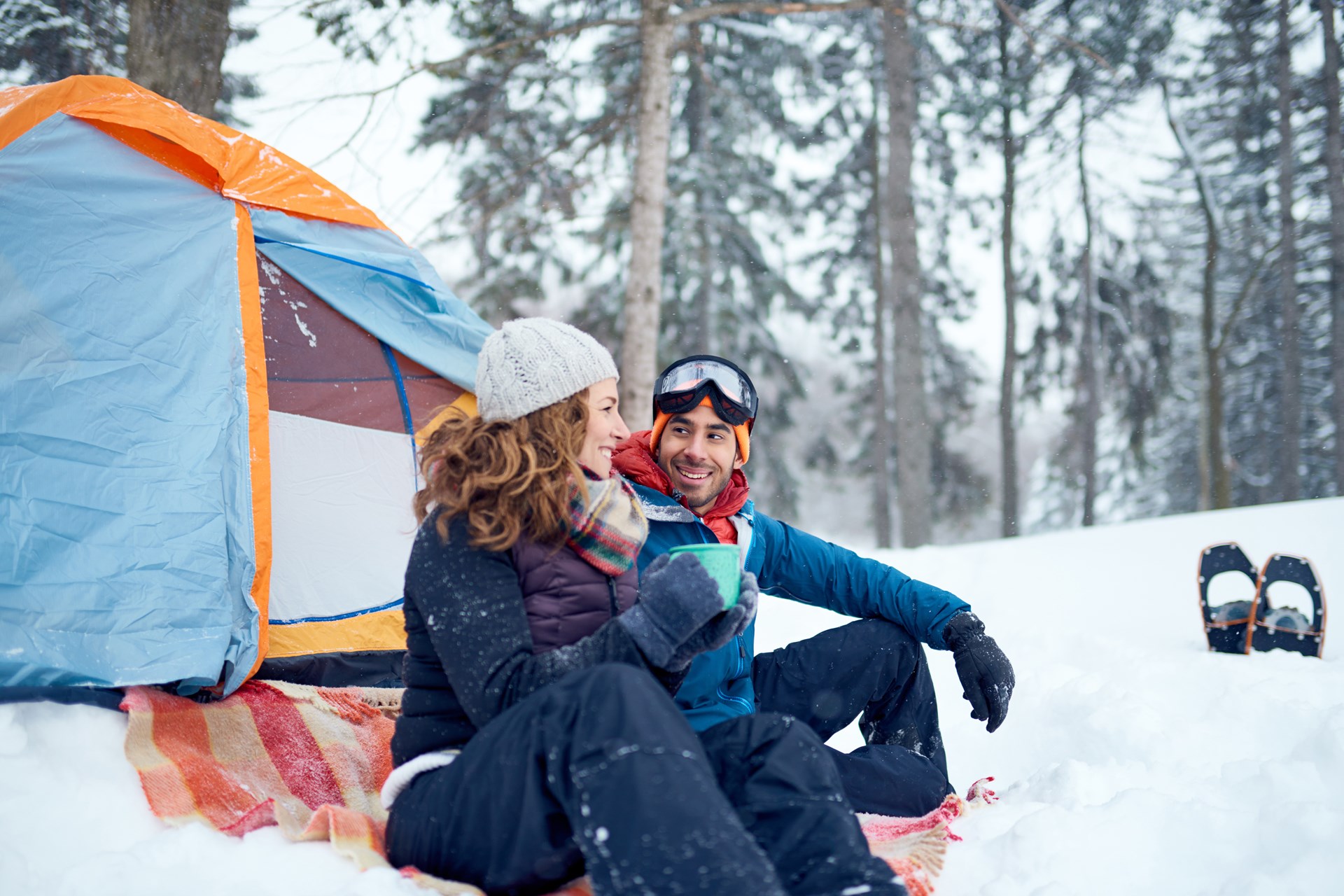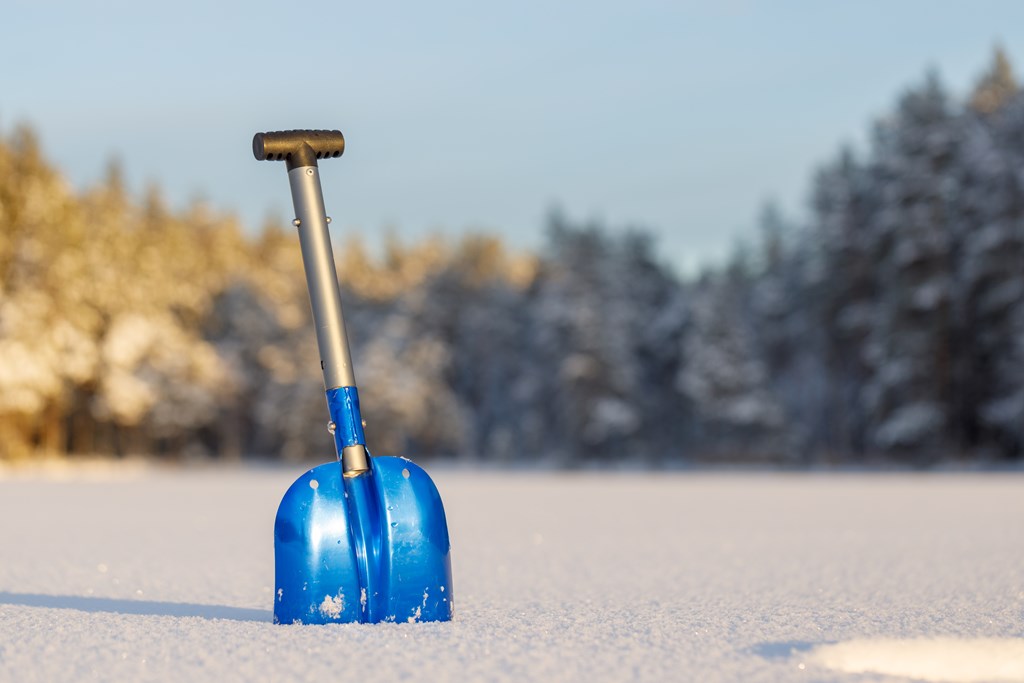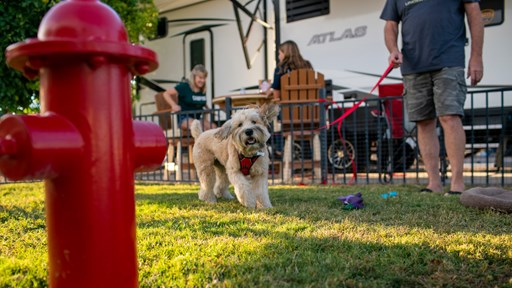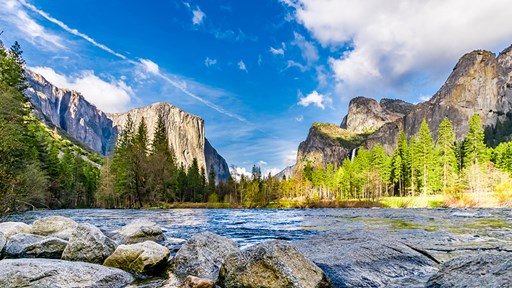If the desire to get out into nature strikes during the fall or winter, there are KOA campgrounds open all year to fulfill that craving. Camping during the cool weather seasons has its pros and cons. There may be fewer crowds around, creating more opportunities for quiet reflection. But there’s the wind, rain, and snow to contend with. We’ve gathered some hacks and tips to help make cold-weather camping enjoyable because experiencing the great outdoors at any time of year is well worth it.
Camping in Cold Weather is More Popular Than Ever – Here’s What You Need to Know
1. Arm Yourself with a Snow Shovel
A snow shovel is a useful, versatile must-have tool when camping in the snow. Use it to flatten and pack a snow pad to set up your tent on. Then shovel a walking path to the main campground road or trail.
If you’re in an RV, use the shovel to remove snow from around and under the vehicle to keep the undercarriage and utilities from freezing.
Have a snow shovel handy while staying in a camping cabin to clear a walkway to the campground road and to access your car.
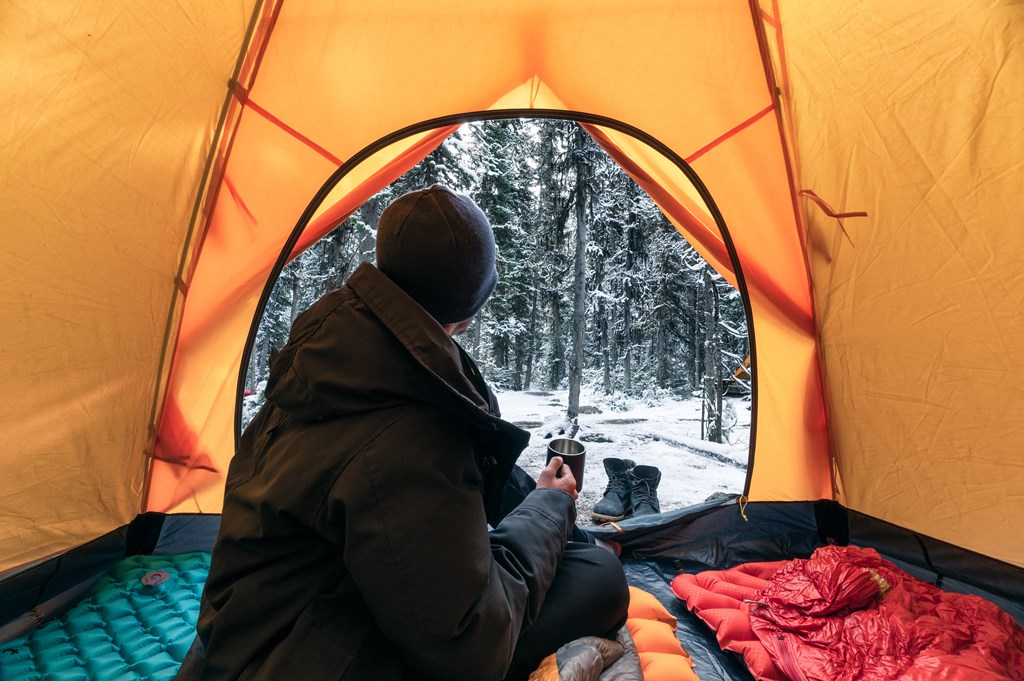
2. Beware of Hazards when Positioning Your Tent
While setting up your tent under the shade of a big tree might be desirable in the summer heat, the same position could be hazardous in cold weather conditions. Look for a clearing away from tree branches that could fall when winds pick up or break under snow buildup. Low-lying bushes can create a natural windbreak, the perfect protection for a tent.
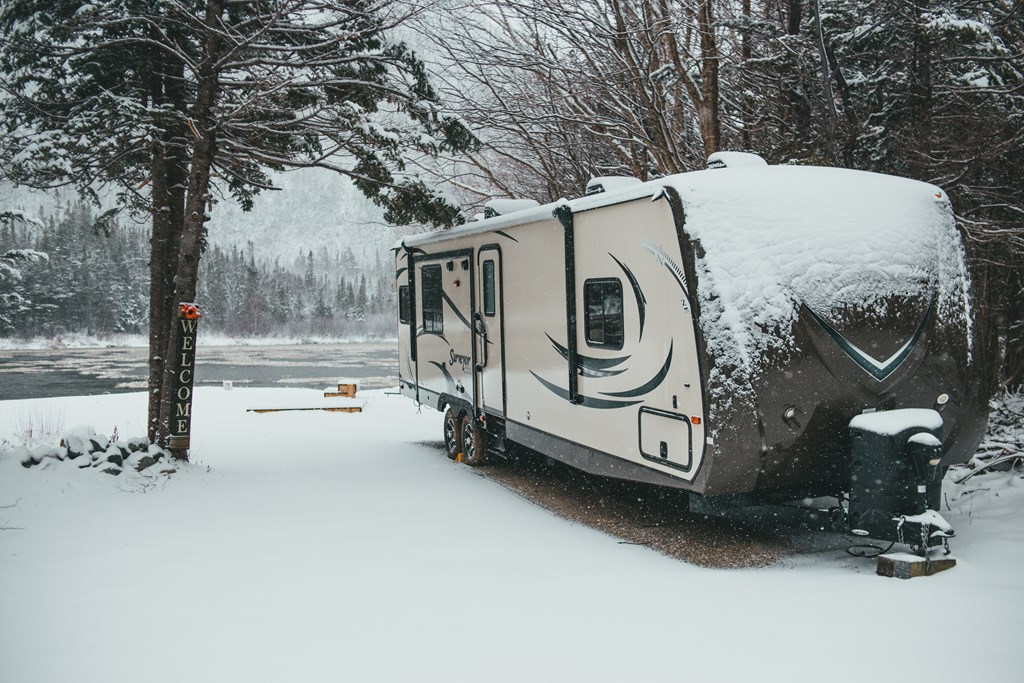
3. Face Your RV Into the Wind
There are a few RV cold weather-related choices you can make when parking. If wind is expected, park the RV with its head or rear faced into the wind. This will keep the wind from pushing against the RV’s sides, increasing side-to-side motion.
Instead of going for shade, pick a “sunny” spot to harness solar power to melt ice and snow build-up.
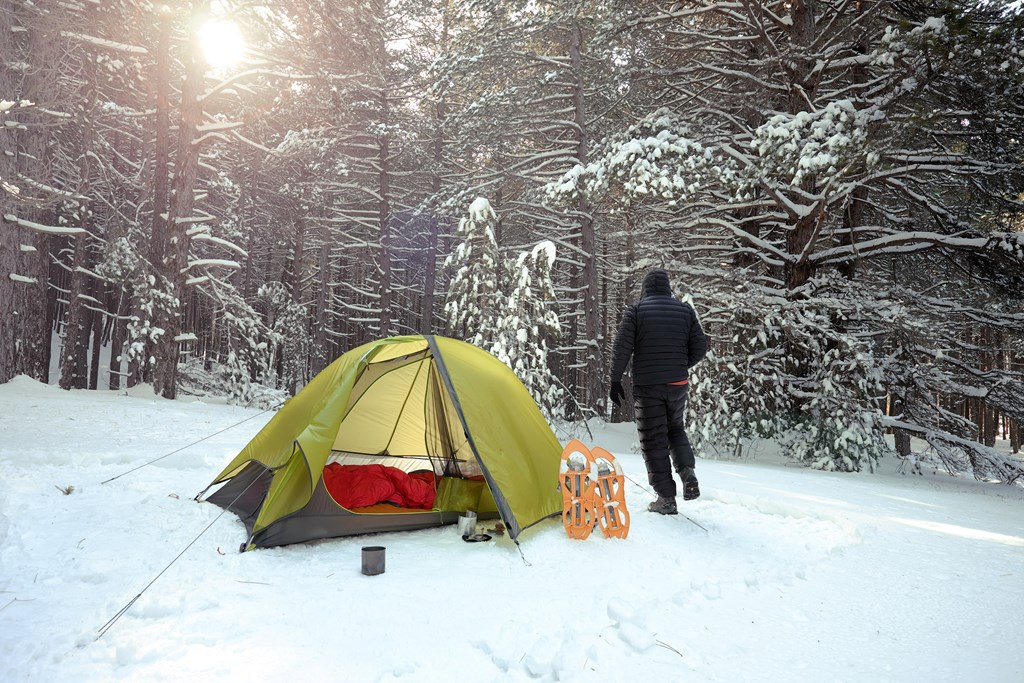
4. Winterize Your Tent with a Tarp On Top
There are a few camping tent types to be aware of. The most common and affordable camping tents are classified as 3-season tents geared for camping in spring, summer, and fall weather conditions, including light rain, wind, and cool nights. Their mesh openings allow for ventilation, pleasant in the summer but downright chilly in winter weather.
Always have a tarp under your tent to protect against rocky surfaces, but it’s essential as a buffer between damp and cold ground. Position another tarp over your tent to cover up those mesh vents to keep warm air inside the tent.
If you plan to do a lot of winter camping, investing in a 4-season cold weather tent might be the way to go. These tents are built to withstand high-altitude mountaineering treks, preparing you to brave all sorts of extreme weather conditions.
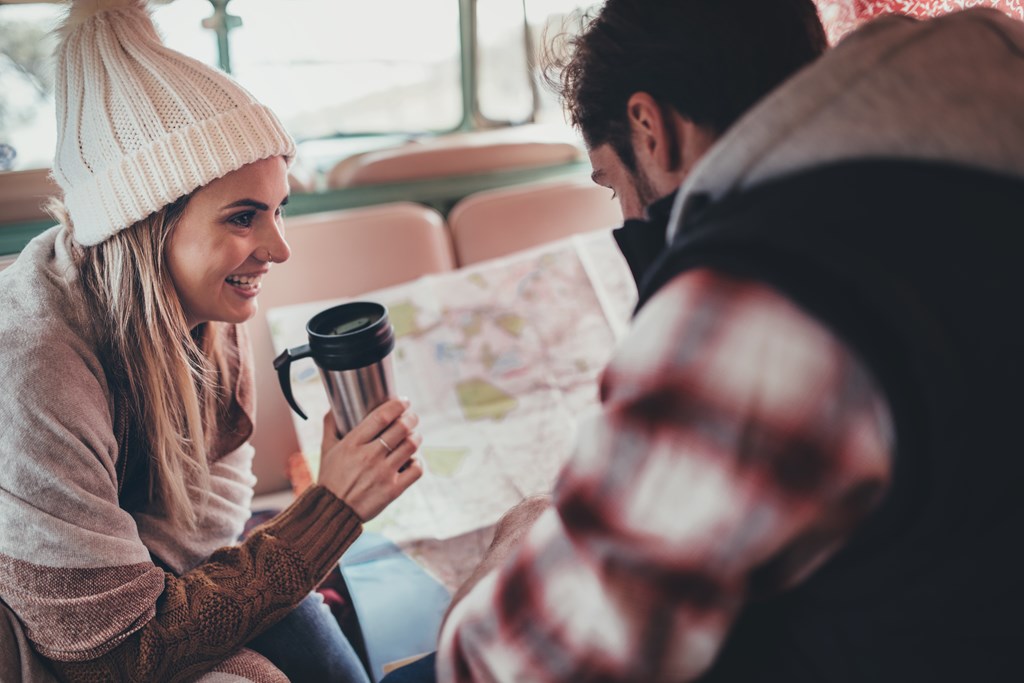
5. Use Rugs to Winterize Your RV Interior
Similarly, you’ll want to keep heat from escaping the interior of your RV. One quick insulation hack is to lay rugs on the floor. Rugs add a “homey” vibe and are vital to creating and trapping warmth, helping keep your body temperature up.
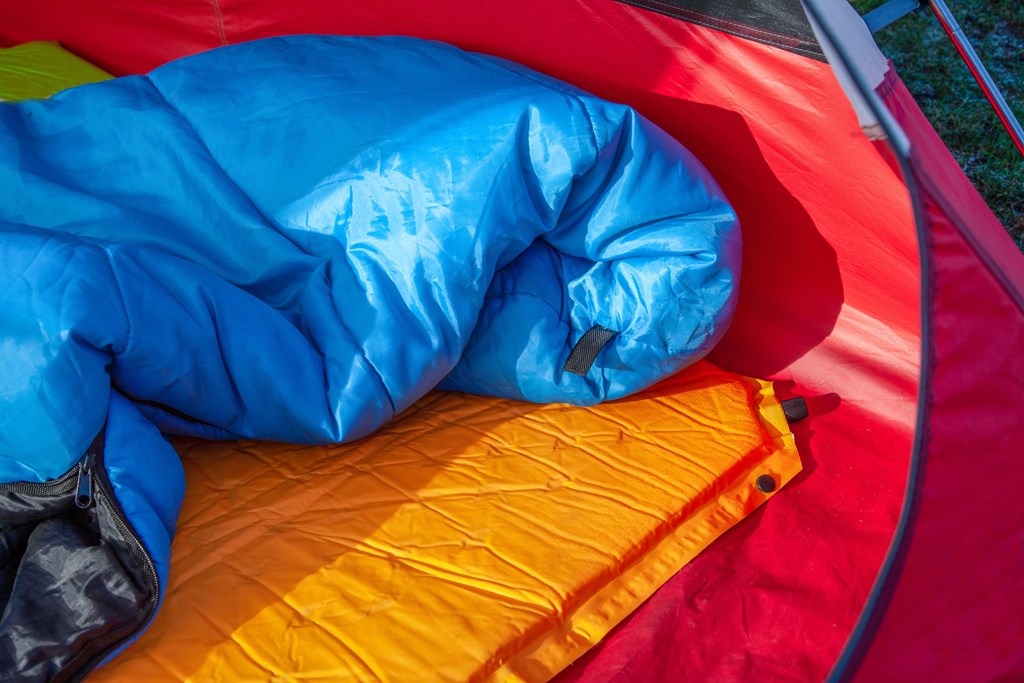
6. Stay Elevated When Sleeping
When you’re cool weather camping, getting your body off the chilly ground will help you stay warm. Lay out a blanket or rug across the entire floor of the tent, or bring two sleeping pads per person. The first pad will buffer you from the cold ground, and the second will cushion your body for comfortable sleeping. Or you can bring an air mattress or cot to elevate off the ground.
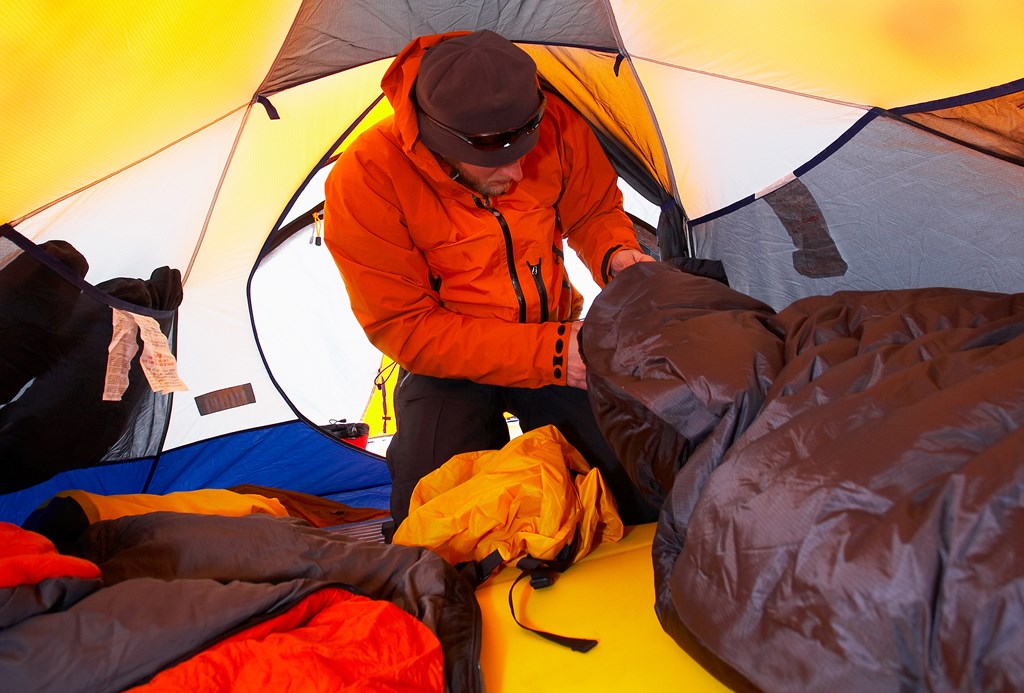
7. Add Heat Pairing a Sleeping Bag with a Sleeping Bag Liner
There are different types of sleeping bags; some are made for warm weather, and some for cold. When choosing a sleeping bag for cold-weather camping, check its temperature rating. A sleeping bag rated 20° Fahrenheit will be warm in conditions 20 degrees and up. And the more form-fitting your sleeping bag is, the more it will keep your body heat trapped inside with you.
If you want an extra layer of warmth, add a sleeping bag liner to act like a sheet, generating more heat and keeping the sleeping bag clean.
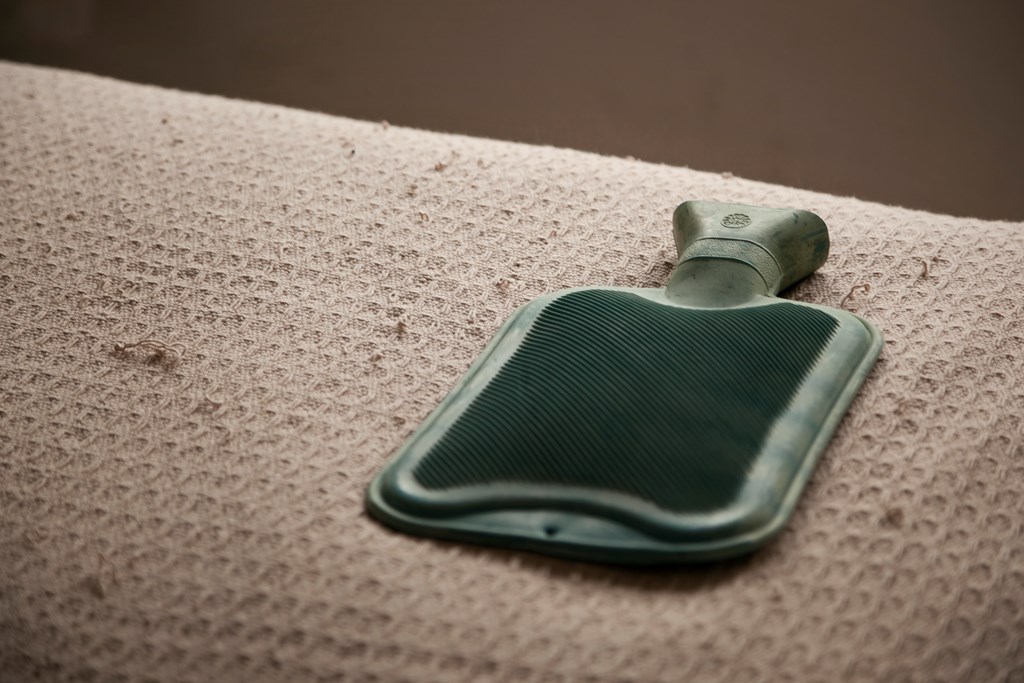
8. Stay Toasty With a Hot Water Bottle
Fill an insulated, rubber hot water bottle with hot, not boiling water, and place it inside your sleeping bag a few minutes before you get into bed. Toasty comfort awaits inside your sleeping bag. And as a bonus, cuddle with the insulated bottle to help keep your body warm throughout the night.
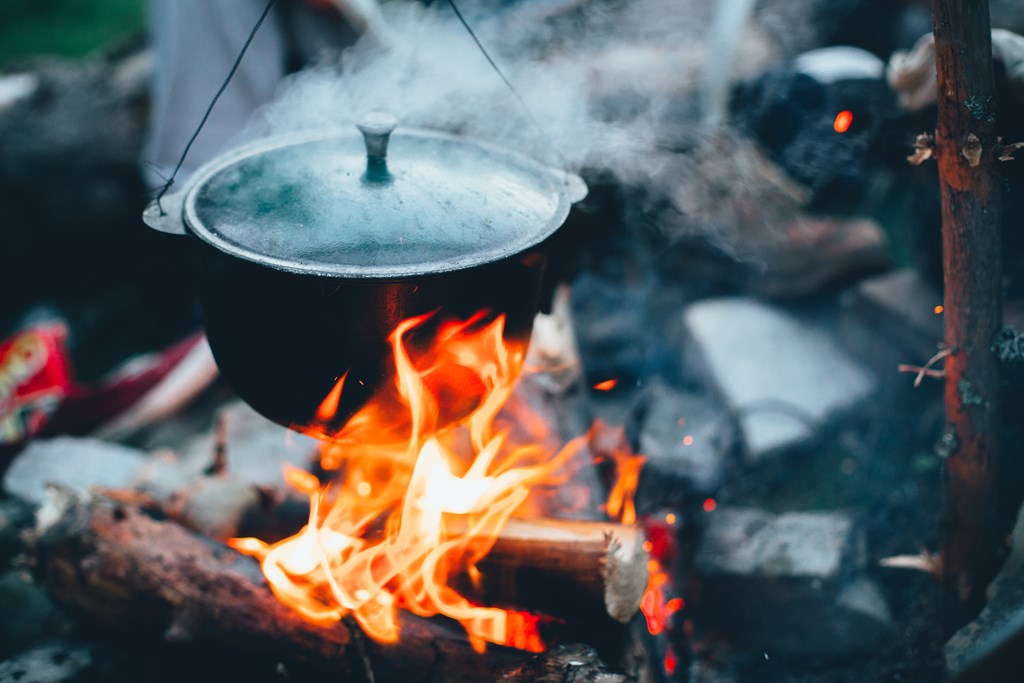
9. Plan One Pot Meals
Whatever cooking method you choose, portable camping stove to campfire grilling, you’ll want to keep food-related mess and prep to a minimum when cooking in the cold. Because who wants to do dishes under freezing water?
Do as much food prep work as possible before the trip and choose some one-pot meals to make camping. Here’s a simple recipe for a deliciously hot main course; one pot tomato basil pasta.
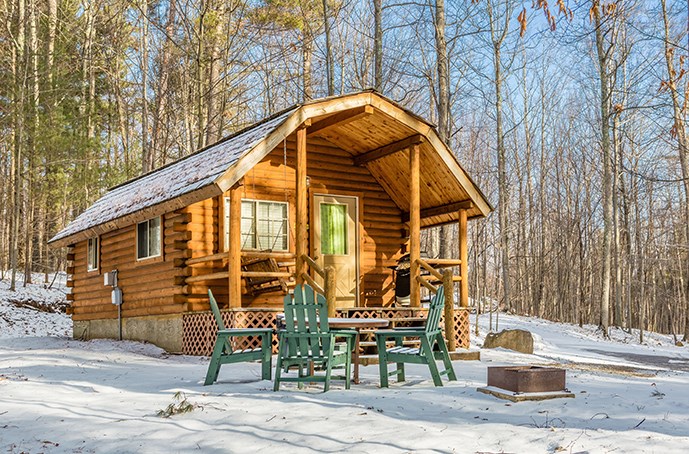
10. Pack up the Tent and Get Inside!
If tent camping in the cold is too much for you to bear, rent a camping cabin or pack up the RV for an insulated shelter experience. Both of these camping options come with electricity and indoor heating.
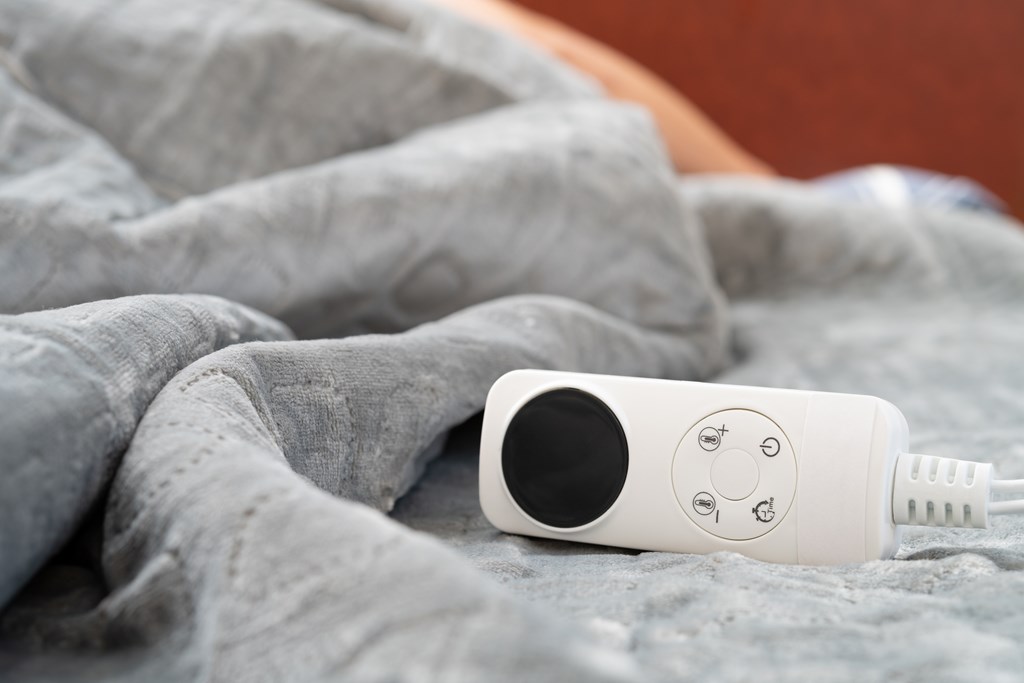
11. Plug in an Electric Blanket
Taking the place of a hot water bottle inside your RV or cabin, an electric blanket provides temperature-controlled heating all night.

12. Plan Fun Indoor Activities to do When the Weather’s Bad
Because rain, wind, or snowfall might keep you cuddled indoors, bringing some activities along is crucial to fending off boredom. Pack fun books, games, and crafts to keep you entertained for hours of fun inside.

Eva Barrows is an accomplished San Francisco Peninsula freelance writer and book editor. She writes for regional magazines like PUNCH and Edible Silicon Valley and was editor-in-chief of Live&ThriveCA magazine. She founded the online literary journal Imitation Fruit in 2007 and has enjoyed promoting fellow writers and artists ever since. Read more of her travel writing at www.evabarrows.com.



















